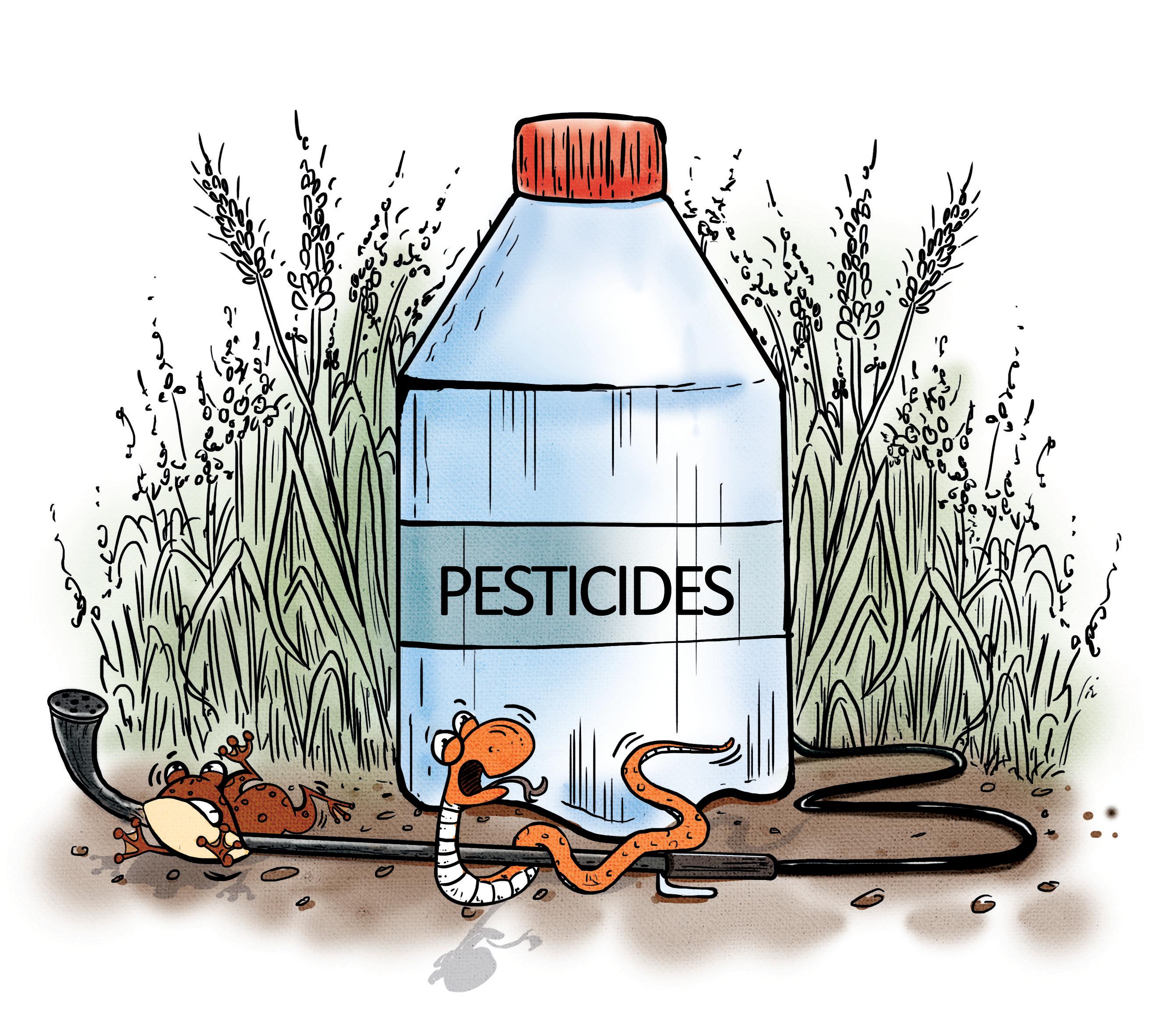
THE DEMAND for land for food production always results in an uncomfortable trade-off between agricultural expansion and species conservation. One can see an example of this tradeoff in paddy fields, whose unique combination of wet and drylands provide ideal habitats for amphibians and reptiles. These cold-blooded animals, together referred to as herpetofauna, provide immense ecological services. Frogs and toads, for instance, act as biological control agents by feeding on crop pests. Several salamanders and tadpoles of frogs help in controlling mosquito and mosquito-borne diseases by feeding on the larvae. They also help improve soil quality and aeration, aid in dispersal of seeds and in pollination-there are almost 40 species of lizards including skinks and geckos that are efficient pollinators. However, the diversity and abundance of these herpetofauna are rapidly declining with increased use of pesticides, fertilisers, land conversion, changes in cropping systems and the reduced proportion of natural vegetation. According to the International Union for Conservation of Nature (IUCN), 1,532 species of Anurans (frogs) and 825 species of reptiles in the world are critically endangered, endangered and vulnerable due to agriculture and its management practices. They appear to particularly threatened in India which has a high amphibian diversity-most of them are endemic to the region-and, as per the UN Food and Agriculture Organization, had the largest cropland area over the last decade, followed by the US and China.
This story is from the {{IssueName}} edition of {{MagazineName}}.
Start your 7-day Magzter GOLD free trial to access thousands of curated premium stories, and 9,000+ magazines and newspapers.
Already a subscriber ? Sign In
This story is from the {{IssueName}} edition of {{MagazineName}}.
Start your 7-day Magzter GOLD free trial to access thousands of curated premium stories, and 9,000+ magazines and newspapers.
Already a subscriber? Sign In

In leading role again
MOVIES AND WEB SERIES ARE ONCE AGAIN BEING SET IN RUSTIC BACKGROUNDS, INDICATING A RECONNECT BETWEEN CINEMA AND THE COUNTRYSIDE

One Nation One Subscription comes at a huge cost
As top US universities scrap big deals with top scientific publishers, India’s ONOS scheme seems flawed and outdated

Return of Rambhog
Bid to revive and sell the aromatic indigenous paddy variety has led to substantial profits for farmers in Uttar Pradesh's Terai region

Scarred by mining
Natural springs of Kashmir drying up due to illegal riverbed mining

Human-to-human spread a mutation away
CANADA IN mid-November confirmed its first human case of avian influenza, with a teenager in the British Columbia being hospitalised after contracting the H5N1 virus that causes the disease. The patient developed a severe form of the disease, also called bird flu, and had respiratory issues. There was no known cause of transmission.

True rehabilitation
Residents of Madhya Pradesh's Kakdi village take relocation as an opportunity to undertake afforestation, develop sustainable practices

INESCAPABLE THREAT
Chemical pollution is the most underrated and underreported risk of the 21st century that threatens all species and regions

THAT NIGHT, 40 YEARS AGO
Bhopal gas disaster is a tragedy that people continue to face

A JOKE, INDEED
A CONFERENCE OF IRRESPONSIBLE PARTIES THAT CREATED AN OPTICAL ILLUSION TO THE REALITY OF A NEW CLIMATE

THINGS FALL APART
THE WORLD HAS MADE PROGRESS IN MITIGATING EMISSIONS AND ADAPTING TO CLIMATE IMPACTS. BUT THE PROGRESS REMAINS GROSSLY INADEQUATE